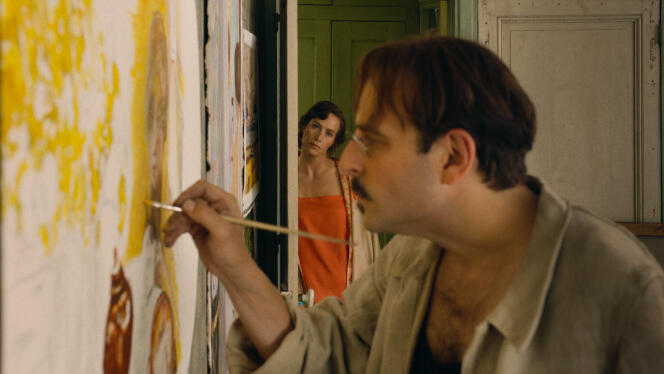THE OPINION OF THE “WORLD” – WHY NOT
After putting Yolande Moreau in the shoes of Séraphine de Senlis (Seraphine, 2008), Martin Provost returns to painting, this time around Pierre Bonnard (1867-1947), a prized figure of post-impressionism who in turn deserved his filmed biography. As the title indicates, however, the film focuses less on the artist himself than on his relationship, mysterious and undecidable, with the woman who was his model and companion for almost fifty years, Maria Boursin ( 1869-1942) known as “Marthe”.
The story opens in the attic of the painter (Vincent Macaigne), facing the seller of artificial flowers (Cécile de France) whom he has just approached in the street, who has agreed to pose for him under the fantasy identity by Marthe de Méligny, correcting modest origins. The artist is talked about in salons, but Marthe keeps him away from all of Paris, jealously keeping him in a country house on the banks of the Seine where they spend happy days and receive friends in dribs and drabs, like Monet (André Marcon), Vuillard (Grégoire Leprince-Ringuet), the pianist Misia Sert (Anouk Grinberg), the collector Thadée Natanson (Stanislas Merhar). However, Pierre keeps Marthe in a very convenient cohabitation (for him), and she deteriorates when the painter turns to another model, Renée Monchaty (Stacy Martin), who moves in with them.
Sacrificial heroine
Bonnard, Pierre and Marthe sacrifices to a major trend of the current biopic, namely shifting the spotlight from the artist towards the woman behind him, a stakeholder in his creation, as a way of slightly amending the structural phallocentrism of art history . Marthe therefore occupies the heart of the film as a sacrificial heroine (asthmatic), while Macaigne as Bonnard plays the role of the shy, bewildered. The pitfall here is that private life, in this case marital life, is held up as the only explanation for a major work – and that is a bit short.
This equivalence between work of art and anecdote clearly circumscribes the domain of academicism, of which the film represents a choice piece. Thus he snorts with his characters in the picturesque landscapes of post-impressionism (we dive naked into the Seine), without questioning Bonnard’s art further: its impenetrable network, its friction of colors, its floating contours, its feverish lights, his astonishing compositions. The routine pictorialism of the image, sometimes faded by the kitsch of some digital background, responds to the conventional horizon of the relationship depicted: if Pierre is guilty for a time of an affair (an adulterous escapade in Rome), everything returns to order when he finally agrees (after thirty years) to marry Marthe. Were we in a bluette?
You have 5% of this article left to read. The rest is reserved for subscribers.
